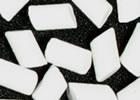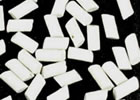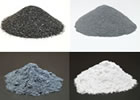Mookaite Tumbling Rough
A multicolor tumbling rough from Western Australia.
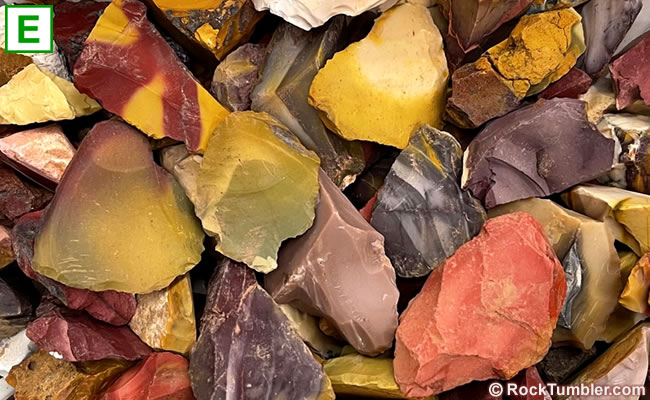
This photo shows a sample of this mookaite tumbling rough. Click on the image for a larger view.
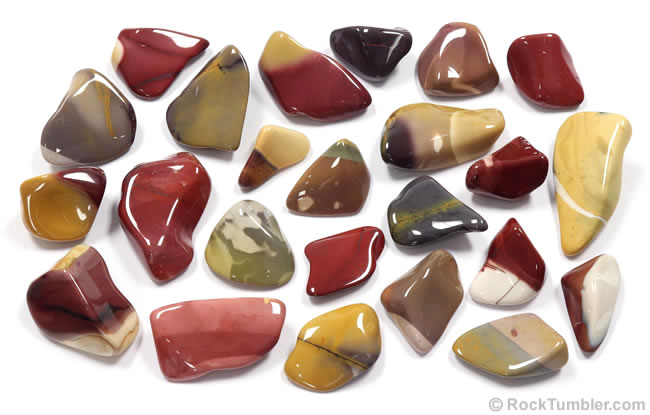
We tumbled a few batches of mookaite and were surprised at how brightly it polished. Here are a few of our tumbled stones.
Mookaite Tumbling Rough
 ,
,  , and
, and  What do they mean?
What do they mean?
Size:
Mostly 1/2 to 2 1/2 inch piecesWhat Is Mookaite?
Mookaite is a trade name used for a multicolored rock mined along Mooka Creek in Western Australia. It is usually composed of chalcedony, but in some parts of the deposit the mookaite is in the form of chert or common opal. The name mookaite is derived from Mooka Creek - a stream that flows through the area where the mookaite is found. The colors of mookaite usually range through white, cream, yellow, brown, red, purple, and sometimes green.
The material that we are offering for sale here is composed of chalcedony and has a hardness of about 7 on the Mohs scale. Because it is an opaque chalcedony, a gemologist would call it a "jasper". The pieces range in size (maximum length) from about 1/2 inch to 2 1/2 inches. Many of the pieces that you will receive are thin flakes, which tend to produce rather flat stones. If you don't like stones with one thin dimension, this is not the rough for you.
How Does Mookaite Form?
The formation of Mookaite begins in the shallow "photic zone" of the ocean. This is the top portion of the ocean where sunlight can penetrate. There, microscopic organisms called "radiolarians" thrive in the sunlit waters, conduct photosynthesis, and form a silica-rich shell.
When the radiolarians die, their silica-rich shells sink to the ocean floor and accumulate as a sediment known as an "ooze". Over time the ooze grows thicker, and its lower layers are compacted and transformed into rock. Geologists call these rocks "radiolarite" because the organisms with the silica-rich parts are radiolarians.
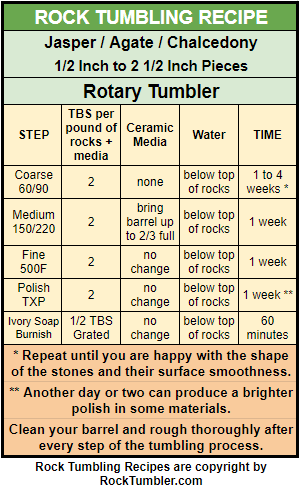
Rock Tumbling Recipe for Jasper, Agate and Other Chalcedony: Here is the recipe that we use for polishing these materials in a small rotary tumbler. It is a five-step recipe, but we often repeat the coarse grit step one or more times for higher quality results.
How We Tumble Mookaite
If the only tumbler you have is a rotary tumbler, you can try tumbling this mookaite using our Tumbling Instructions for Jasper, Agate and Chalcedony. The instructions are summarized in the accompanying chart.
However, for best results, we recommend a rotary tumbler for the coarse grit step, and then a vibratory tumbler for the medium grit, fine grit, and polishing steps. This is because mookaite is a brittle material, and it can easily become chipped and bruised in a rotary tumbler. Using ceramic media in your rotary tumbler can help, but the best way to finish tumbling mookaite is definitely with a vibratory tumbler.
Good luck!
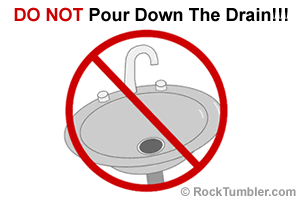
Please don't pour your rock tumbling waste water down a drain. It will harden in the drain and ruin your plumbing.
| Tumble this rock using our Instructions for Jasper, Agate, and Chalcedony. |
Customers also bought...
Large Ceramic Media

Small Ceramic Media

Standard Grit Kit



